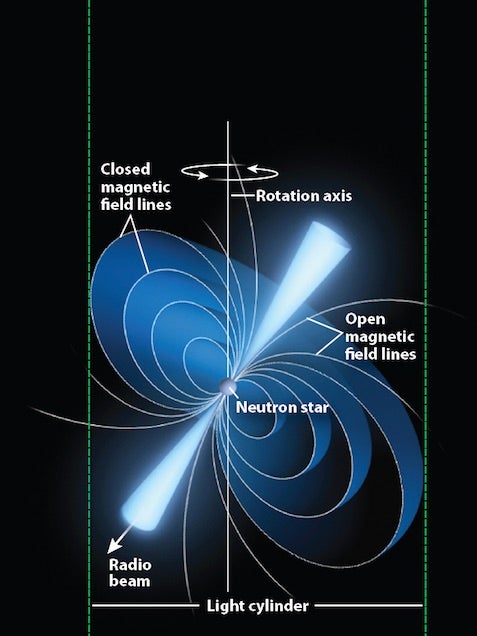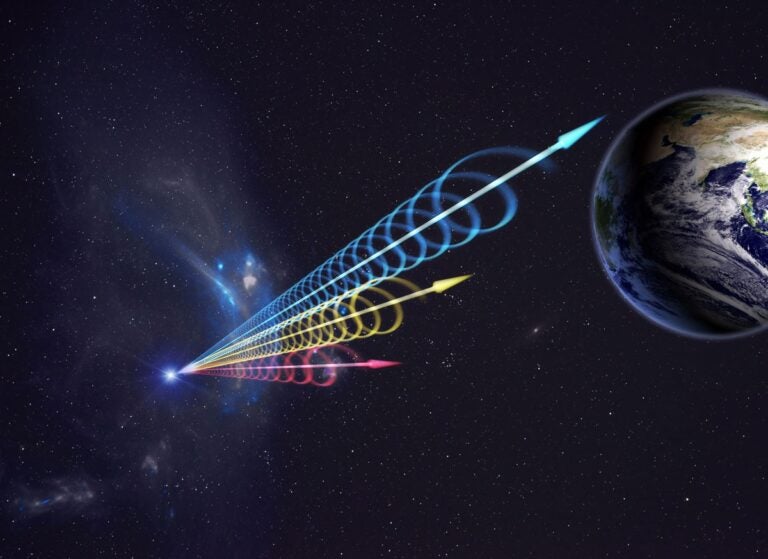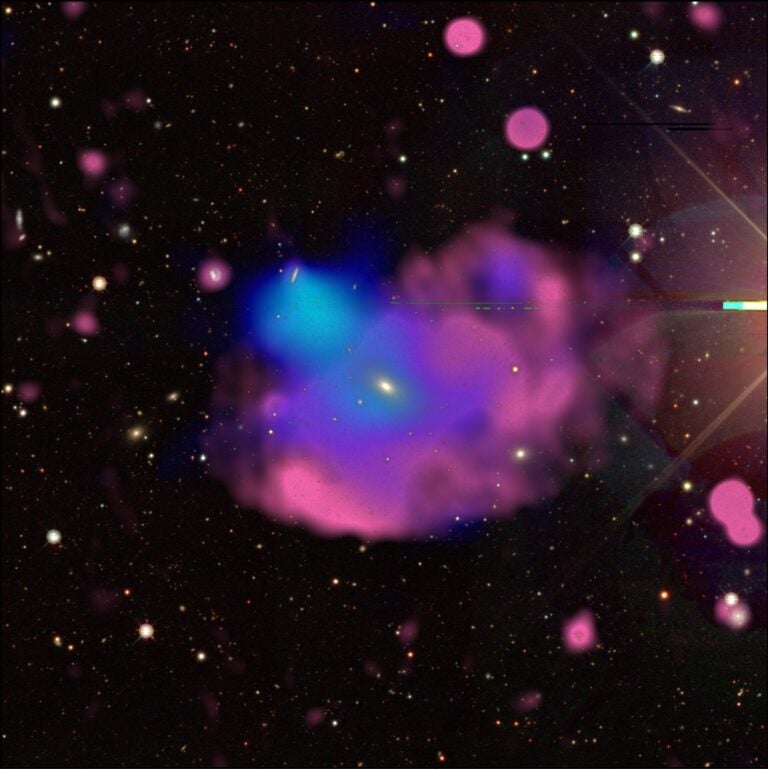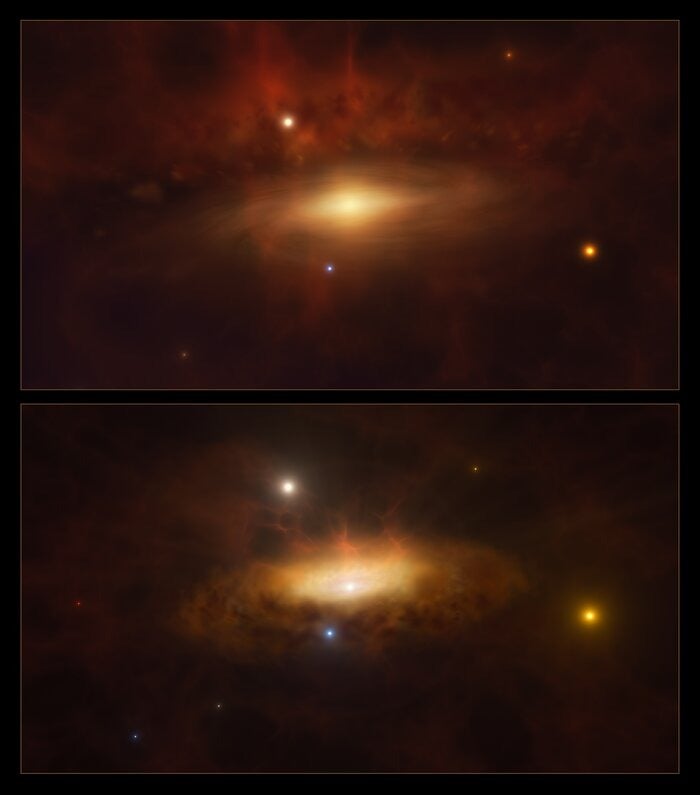Particles accelerated by the pulsar stream along these open field lines and produce radiation that stimulates a cascade of additional particles, which radiate as well. Because the particles are moving relativistically (close to the speed of light), their radiation is beamed in the direction of their motion. The bulk of a pulsar’s radio emission is produced at some particular height above the magnetic pole and confined to a narrow beam defined by the field line orientation at that height (which points largely upward). As the star rotates, if this beam crosses the path of the observer, it is seen as a radio pulse. The cross-section of the beam can be complicated, meaning that the pulse shape can depend on which part of the beam crosses the observer’s line of sight.
The exact details of where in the open-field region the particles create this radio emission is still under investigation. While many models suggest it is formed close to the poles, recent studies indicate that the emission may occur closer to the edges of the light cylinder. Further studies are ongoing to better understand the details of the process, particularly at higher energies.
Pat Slane
Senior Astrophysicist,
Smithsonian Astrophysical Observatory and Lecturer,
Department of Astronomy, Harvard University,
Cambridge, Massachusetts










